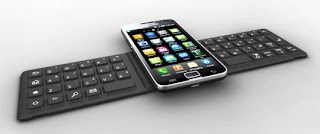Apple's anxiously-awaited third generation iPad was introduced in San Francisco. Apple's iPad 3 has a host of upgrades and additions including a bright new Retina display driven by an A5X chip with quad-core graphics, a 5-megapixel iSight camera and now, full 1080p HD video capture capability. With both Wi-Fi-only and 4G models, the new iPad 3 can connect to numerous speedy networks such as the 4G LTEs offered by AT&T and Verizon, and it still offers up to 10 hours of battery life.
The iPad 3's new Retina display boasts 2048 x 1536 pixel resolution (four times the number offered by iPad 2 screens and more than a million greater than HD TV offers). As a result video, images, web pages and text appear especially sharp and realistic. Apple says the display simply looks deeper, richer and more vivid than that offered by previous models. With its now full 1080p HD video resolution, viewing movies on the iPad 3 is also improved.
Grabbing great video and stills will be noticeably easier with the new image-stabilized 5-megapixel iSight camera. Budding photogs can use the newly announced iPhoto for iPad app to edit, enhance and share still shots with others - which is likely to take a bite out of Adobe's sales of its recently released PhotoShop Touch app.
To make the iPad 3 more "world ready," its Wi-Fi + 4G with built-in next-gen 4G LTE (Long Term Evolution) offers enhanced support for rapid networks globally, including HSPA+ and DC-HSDPA (High Speed Downlink Packet Access).
With iOS 5.1, which Apple claims to be the
"world's most advanced mobile operating system," the iPad 3 sports a number of new functions and improvements:
- a reconfigured Camera app with a video stabilizer
- support for English, French, German and Japanese dictation
- compatibility with numerous iCloud services e.g. iTunes in the Cloud, Photo Stream and Documents in the Cloud
- extensive updates to iMovie, GarageBand and iPhoto to name a few
In iPhoto, Multi-Touch will allow the easy sorting of photos and image retouching using fingertip brushes and iCloud photo journal sharing. In iMovie, you'll now be able to generate Hollywood-style trailers while recording HD video, and GarageBand will now come with a feature called Jam Session, which will allow a group of friends to play instruments and record music live while wirelessly connected on their iOS devices. Additionally, the iPad 3 can run almost every one of the 585,000 apps sold by the App Store, which adds an incredible amount of functionality to its already appreciable capability.
Pricing and Availability Information:
Beginning March 16, the new black and white iPads, still thin and light, will go for US$499 (16GB), $599 (32GB) and $699 for the 64GB model. Starting today, March 7, the iPad 2 drops to a more affordable $399 for those who can somehow resist that urge to acquire the latest and greatest.
For Wi-Fi + 4G equipped models (either AT+T or Verizon), suggested retail is $629 (16GB), $729 (32GB) and $829 for the 64GB model. The iPad 3 will also be available in Australia, Canada, France, Germany, Hong Kong, Japan, Puerto Rico, Singapore, Switzerland, UK and the US Virgin Islands on Friday, March 16.








